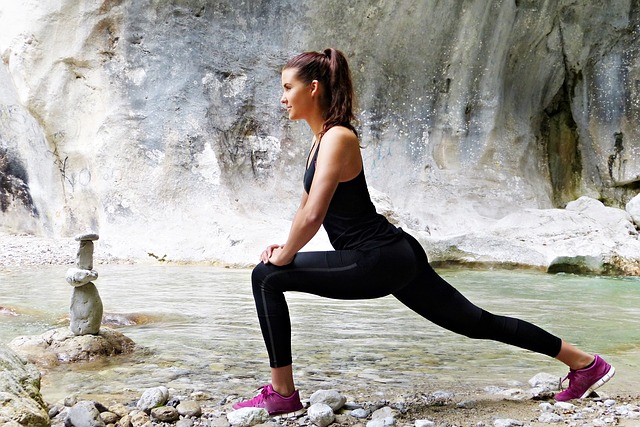Article
Stretch now for tomorrow
Today most jobs required that one sit at a desk or stand in place for prolonged periods of time. Routine stretching is the best way to avoid and overcome musculature problems, such as upper and lower back pain, neck pain and posture issues that stem from contemporary working conditions. Whatever your career or lifestyle, stretching is essential for maintaining a healthy body and mind. Take a look at the top 10 health benefits of stretching and start benefiting today.

The top 10 health benefits of stretching
1. Stretching sharpness focus.
2. Stretching reduces muscle tension and promotes muscle relaxation
3. Stretching relives lower back pain
4. Stretching improves oxygen flow and essential nutrient intake
5. Stretching reduces stress
6. Stretching improves posture
7. Stretching slows joint degeneration
8. Stretching eliminates pain caused by muscle stress
9. Stretching improves circulation
10. Stretching reduces the risk of injury
Stretching is an excellent thing you can do for your health. These simple, yet effective moves can help you limber up for sports, improve your balance and prevent falls, increase your flexibility, and even help relieve arthritis, back, and knee pain. Whether you're an armchair athlete or a sports enthusiast, a few tips from the experts at Harvard Medical School will show you how to create effective stretching routines that meet your needs and ability.

The ideal stretching routine
Stretching promotes flexibility and helps your joints maintain a healthy range of motion, and in doing so, also lowers the chances of joint and muscle strain.

But how often should you stretch? How long should you hold a stretch? And how many times should you do each stretch?
A panel of experts convened by the American College of Sports Medicine (ACSM) reviewed a wide range of studies to help answer these questions. Stretching has been studied much less rigorously than other forms of exercise, so the science is not as strong. But, based on the evidence, the panel agreed that:
Healthy adults should do flexibility exercises (stretches, yoga, or tai chi) for all major muscle-tendon groups — neck, shoulders, chest, trunk, lower back, hips, legs, and ankles — at least two to three times a week.
For optimal results, you should spend a total of 60 seconds on each stretching exercise. So, if you can hold a particular stretch for 15 seconds, repeating it three more times would be ideal. If you can hold the stretch for 20 seconds, two more repetitions would do the trick.
Calling all desks jockeys: Stretching to ease neck and shoulder pain
Any task that encourages you to sit in one position for long hours can wreak havoc on posture. Even enjoyable hours whiled away with an e-reader or a tablet may have that effect — and worse. A study from the Harvard T.H. Chan School of Public Health, Brigham and Women's Hospital, and Microsoft showed that holding a tablet too low in your lap can force the muscles and bones in the neck into an unnatural posture, which may strain or aggravate other muscles, nerves, tendons, ligaments, and spinal discs. Over time, poor posture chips away at the range of motion in your joints. The neck problems described in the study above — and repetitive stress injuries from tasks such as typing — may occur, too.

Fortunately, good ergonomics and regular posture checks can help combat these problems.
Ergonomics for computers, phones, and tablets
If you use a laptop or desktop computer:
-
Choose a chair with good lumbar support, or place a pillow against the small of your back.
-
Position the top of your monitor so it's just below eye level.
-
Sit up straight with your head level, not bent forward.
-
Keep your shoulders relaxed and your elbows close to your body.
-
Keep hands, wrists, forearms, and thighs parallel to the floor.
-
If you use a handheld phone:
-
Avoid propping the phone between your head and shoulder.
-
Consider investing in a comfortable, hands-free headset. Depending on your needs, you can choose one designed for use with cordless phones, landlines, or computers.
If you use an e-reader or tablet:
Buy a case that allows you to prop the device at a comfortable viewing angle, one that doesn't require you to bend your neck much.
Change things up every few minutes. "Usually we tell people they should change their position every 15 minutes," says Dr. Jack Dennerlein, principal investigator of the tablet study and an adjunct professor or ergonomics and safety at the Harvard T.H. Chan School of Public Health. "Just change your hands, shift your weight. Stand up or sit down."
To learn more about how to improve your strength and flexibility, read ‘Stretching’, a Special Health Report from Harvard Medical School.
Share article









You must be logged in to add a comment ... → Log in | Register